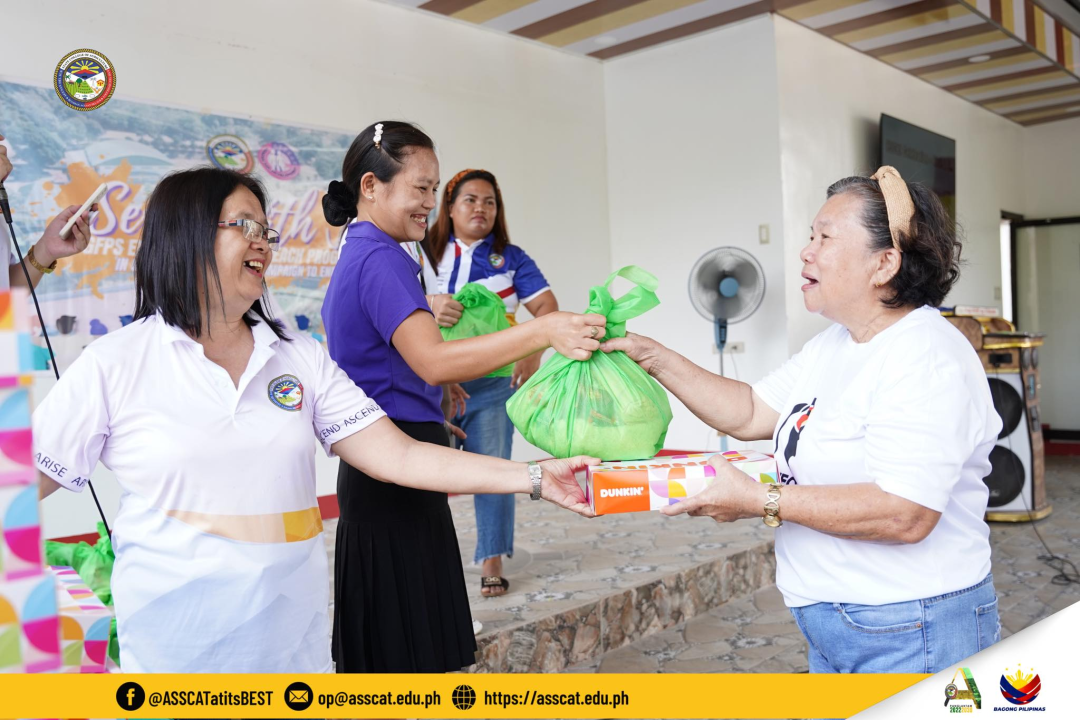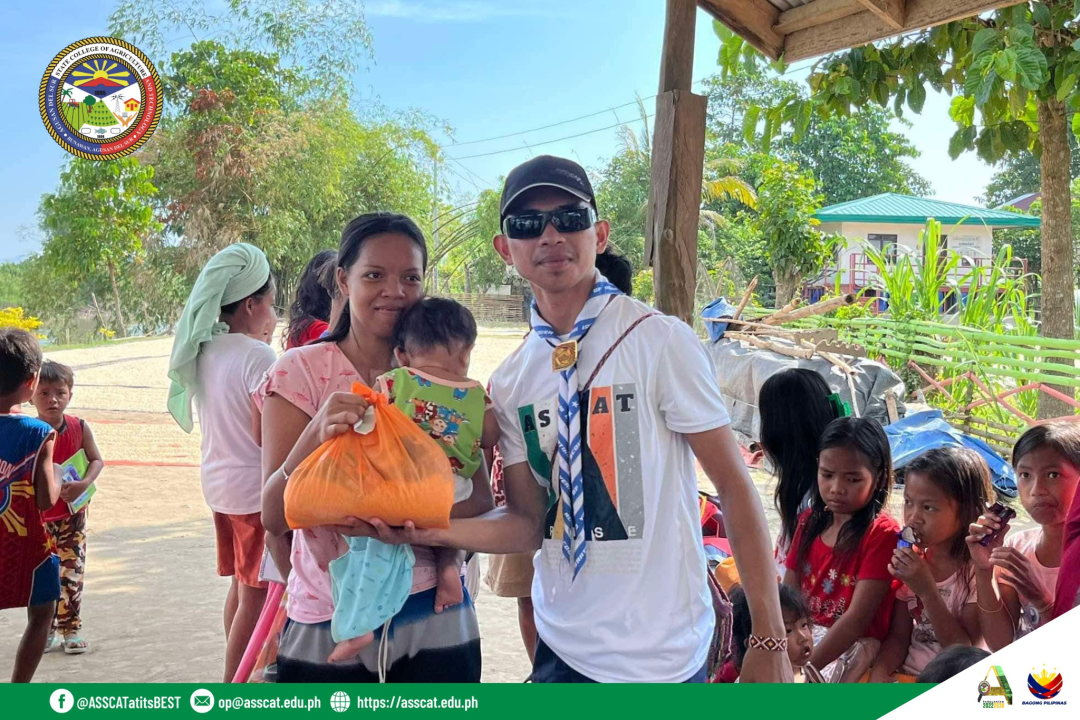SDG 2 Zero Hunger
ASSCAT’s commitment to SDG 2 is reflected in its focused efforts to enhance food security, promote sustainable agricultural practices, and understand the socioeconomic drivers of hunger. Through evidence-based research and community engagement, the institution advances strategies that improve agricultural productivity, support vulnerable populations, and contribute to national and global efforts to eliminate hunger.
- Overview
- Indicators and Progress
SDG 2 seeks to end hunger and ensure that every person—especially the most vulnerable—has access to safe, nutritious, and sufficient food all year round. As global challenges intensify due to climate change, economic disruptions, and population growth, food security remains one of the most urgent development priorities. Achieving this goal requires transforming agricultural systems, strengthening rural livelihoods, and promoting sustainable practices that can withstand environmental and market pressures.
For institutions, communities, and governments, SDG 2 serves as a call to build resilient food systems that not only address immediate nutritional needs but also support long-term agricultural productivity. Progress depends on inclusive policies, innovative technologies, and strong partnerships that ensure no family is left behind in the quest for a hunger-free world.
2.1 Research on Zero Hunger
ASSCAT is committed to advancing research that supports food security, sustainable agriculture, and community resilience. The institution contributes through studies focusing on rice production, crop disease detection, livestock nutrition, and socioeconomic factors influencing hunger.
Agricultural and Technological Research
One key study, “Effects of Different Cutting Heights and Irrigation Techniques on the Yield Performance of Ratoon Rice (Oryza sativa),” evaluates practices that can improve rice production—a staple crop crucial to regional food security. Conducted by Jane M. Tecson and Roger C. Montepio, the research identifies strategies for optimizing yield, demonstrating ASSCAT’s dedication to improving agricultural productivity.
Meanwhile, Mark Vincent T. Cortez’s work on “Operational Issues of Marketing Agricultural Products in Agusan del Sur: A Trifocal Perspective” highlights the marketing challenges faced by farmers, including distribution, pricing, and stakeholder coordination. Insights from this study help guide policy recommendations and support farmers’ economic stability—an important factor in securing stable food supply chains.
In the area of technological innovation, Michael Sabugaa’s research on “Modern Image Processing Techniques for Identifying and Classifying Disease Detection in Potatoes” reflects ASSCAT’s engagement with digital agriculture. While the publication venue has indexing limitations, the study indicates the institution’s efforts to explore smart technology for crop disease monitoring.
Table 2.1.1 — Research Output and Indexing (CiteScore / SJR-Indexed)
| Title | Authors | Journal/Publisher | SJR 2024 | H-Index | Remarks |
|---|---|---|---|---|---|
| Effects of Different Cutting Heights and Irrigation Techniques on Ratoon Rice | Tecson, Montepio | International Exchange & Innovation Conf. | 0.181 | 8 | Crop Production / Agri Science |
| Operational Issues of Marketing Agricultural Products | Cortez | Journal of Agriculture and Crops | N/A | 5 | Agriculture / Marketing |
| Modern Image Processing Techniques for Potato Disease Detection | Sabugaa | NeuroQuantology | 0.285 | 30 | Tech application; journal delisted (caution) |
2.1.2 Field-Weighted Citation Impact (FWCI)
Table 2.1.2 — FWCI Results
| Publication Title | Year | Citations | Expected Citations | FWCI |
|---|---|---|---|---|
| Complementing Plant and Animal Protein Sources for Broiler Production | 2024 | 1 | 5 | 0.20 |
| Sweet Potato Leaf Meal + Multi-herbal Extract for Poultry Productivity | 2024 | 1 | 5 | 0.20 |
Interpretation:
The average FWCI of 0.20 indicates that these studies currently receive fewer citations than the global average. While visibility can be improved, both works contribute to sustainable livestock production—an essential component of Zero Hunger, focusing on low-cost, accessible protein sources and enhanced food productivity.
Although the FWCI indicates that these studies are cited less than global averages, they form a foundation for enhancing the reach and impact of ASSCAT’s poverty-focused research. Strengthening collaborations, publishing in high-visibility journals, and engaging in international networks can increase the influence of future work.
2.1.3 Publications on Poverty and Hunger Dynamics
Beyond agricultural science, ASSCAT also contributes to understanding the root causes of hunger, particularly poverty, human development challenges, and economic vulnerability.
Mark Vincent T. Cortez’s series of studies examining poverty incidence, human development, and industrial performance offer important insights into why food insecurity persists in many regions. Although these works are not directly agricultural, they provide evidence on how income, employment, education, and economic structure influence a household’s ability to access sufficient and nutritious food.
Selected Publications
| Publication Title | Author | Notes |
|---|---|---|
| A Panel Regression Analysis of Poverty Incidence Among South Asian Countries | Cortez | Connects cross-country poverty dynamics to food access. |
| Human Development & Industrial Performance as Predictors of Poverty | Cortez | Shows how economic and social indicators influence hunger. |
| Predicting Poverty Incidence Using HDI and Industrial Indices | Cortez | Helps identify vulnerable populations prone to food insecurity. |
Taken together, ASSCAT’s research contributions highlight a comprehensive approach to SDG 2—one that integrates scientific innovation, agricultural improvement, and an understanding of economic realities that affect hunger. This combination allows the institution to support both immediate food production needs and long-term strategies for reducing poverty and improving food access.
Through continued research, community engagement, and evidence-based policymaking, ASSCAT strengthens its role in helping communities move toward a hunger-free and sustainable future.







